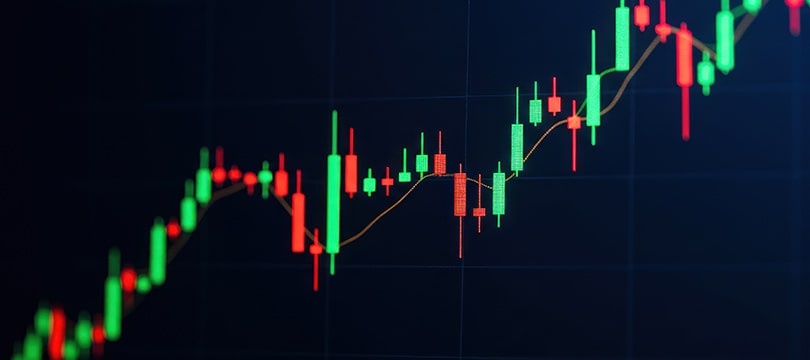For traders of every order and degree, having "exclusive" information, or rather information that is invisible to most market participants, represents a huge competitive advantage. Well, there are tools that allow you to obtain it. Among these,
the liquidity heatmap.
It is a type of advanced visualization that allows you to "see" pending orders in the market, mapping areas where potential dynamic resistances or supports are concentrated. Let's see together
how it works and how to best use it.
What is a liquidity heatmap and how does it work
Let's start with the basics, that is, with a definition of a heatmap. This expression refers to a
graphical representation that highlights the distribution of limit orders in the trading book.
Traditional charts show prices that have already been traded, while the heatmap shines a spotlight
on the latent market, i.e., on orders that have not yet been executed but are already present in the system.
The functioning is simple but effective:
- Areas with a higher concentration of orders are highlighted with more intense colors (usually red or orange);
- Areas with lower density are "colder" and appear blue or transparent;
The chart updates
in real-time, thus allowing you to observe the appearance, strengthening, or disappearance of liquidity areas.
In simple terms, the heatmap
makes the collective intention of the market visible. It allows you to identify areas where many traders want to sell or buy but have not yet executed.
The price often tends to react to these areas, either because it bounces off them (supports/resistances), or because it crosses them with force (breaking congestions).
The usefulness of heatmaps for Forex and CFD trading
In Forex trading, liquidity is distributed in a decentralized and often opaque manner. However, some platforms allow you to obtain level 2 data flows that simulate the behavior of the book through CFDs linked to currency futures. It is precisely in this case that the liquidity heatmap becomes a key tool for:
- Anticipating bounces, when there is a strong "limit area", for example, in the 1.0880 area on EUR/USD, you can predict a defense by those who have placed those offers.
- Identifying exhaustion of thrust, if the price reaches a "hot" zone and slows down, it is possible that there is not enough strength to continue. This suggests the possibility of a reversal or a pause.
- Avoiding entry into "ambiguous" zones, many false breakouts are born near areas where the book is manipulated with fictitious or short-term orders.
- Complementing classic price action, the heatmap can confirm or contradict signals derived from static supports, candles, or technical patterns.
But let's look together at a typical use of the heatmap. A use that scalpers and day traders are used to making. These traders
look for areas where liquidity appears and disappears rapidly, a signal that the market is under observation by algorithms or large operators. In those points, sudden movements often occur.
How to correctly read a heatmap: signals and traps
Reading a heatmap requires a bit of experience and attention to context. It is not enough to observe a red zone to assume that the price will bounce. It is necessary to distinguish between "reliable signals" and "traps". Here is an overview.
These are reliable signals.
- Constant presence of liquidity over time. If a level remains "hot" even after minutes or hours, it is a sign of real interest from traders.
- Price response to the level. If the price has already reacted several times to a particular liquidity zone, that map becomes an operational confirmation.
- Growing accumulation on symmetrical levels. For example, a cluster of orders both above and below a psychological level (e.g., 1.1000) may indicate preparation for a breakout.
These, on the other hand, are traps.
Bait orders (spoofing). Some traders enter large volumes at a certain price and then cancel them just before the price reaches them, generating false signals.
Excessive confidence in static zones. The heatmap is dynamic, and what is a "hot" zone today could disappear in a few seconds. Never operate without price action confirmation.
Confusion between bounce and breakout. A zone rich in orders can either reject the price or attract it, depending on the strength of the movement in progress.
The secret is one: use the heatmap as a filter, not as the only signal. It must be integrated with patterns, volume, time, and macro context.
At this point, it remains to be asked:
what do you need to get started?
Basically, three things are needed:
- A compatible platform, e.g., Bookmap or Quantower. For those looking for an accessible and complete solution, Forex Sentiment offers a heatmap that allows you to view the liquidity distribution on the main currency crosses in real-time.
- Real broker or data feed. Many retail brokers do not expose the true level 2, so it is necessary to connect to professional flows that offer this function.
- Reading ability and real-time. These are not charts to be observed after the fact, but tools to be used live during the session. An ad hoc skill set is needed.
Is the liquidity heatmap easy to use? No. Can it be useful? Yes.
It is a tool that, if well understood and contextualized,
can offer a significant informational advantage. As we have seen, it allows you to anticipate potential turning points, avoid dangerous areas, and interpret the dynamics between buyers and sellers in real-time. Of course, you need to invest in tools and self-training.




